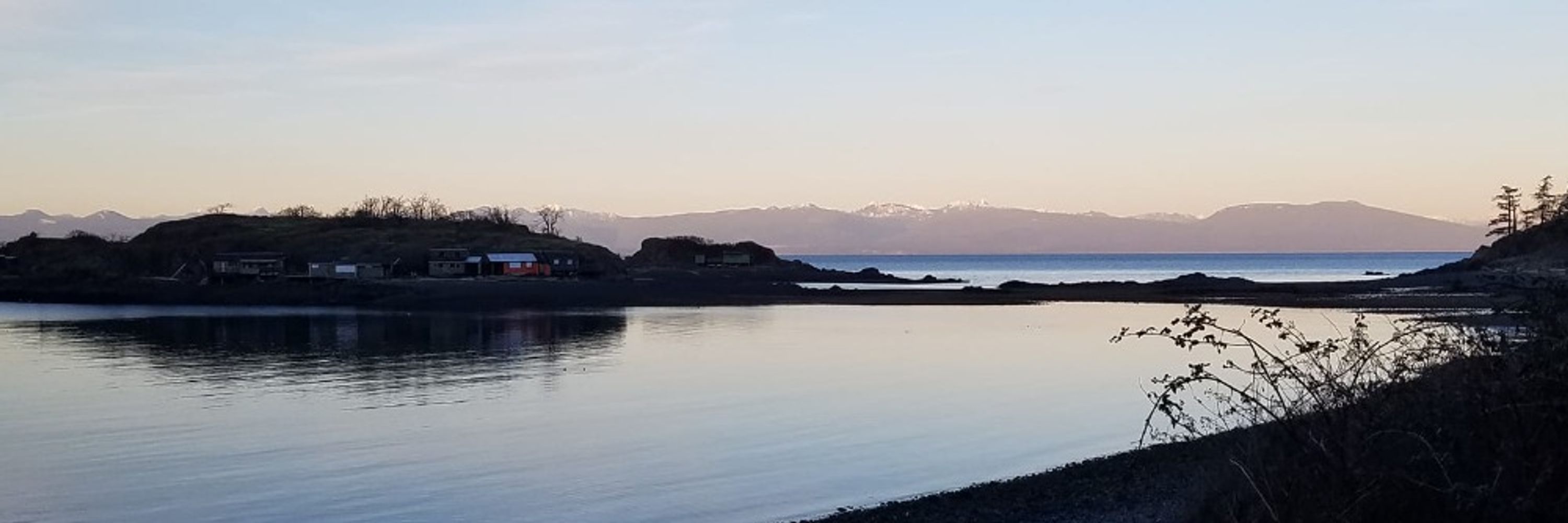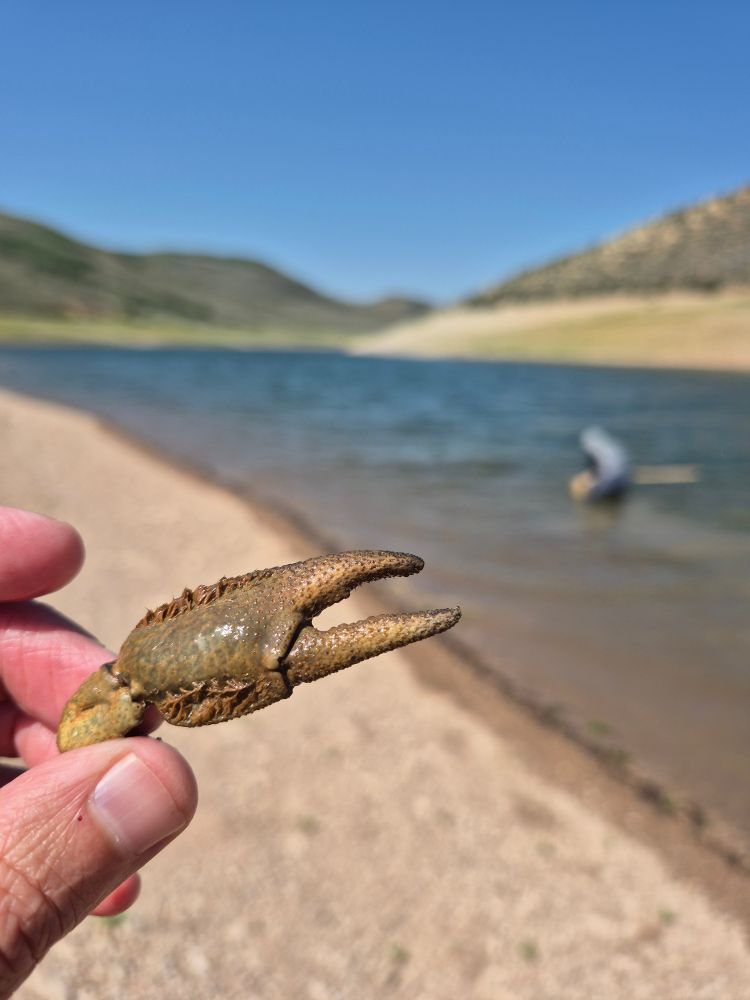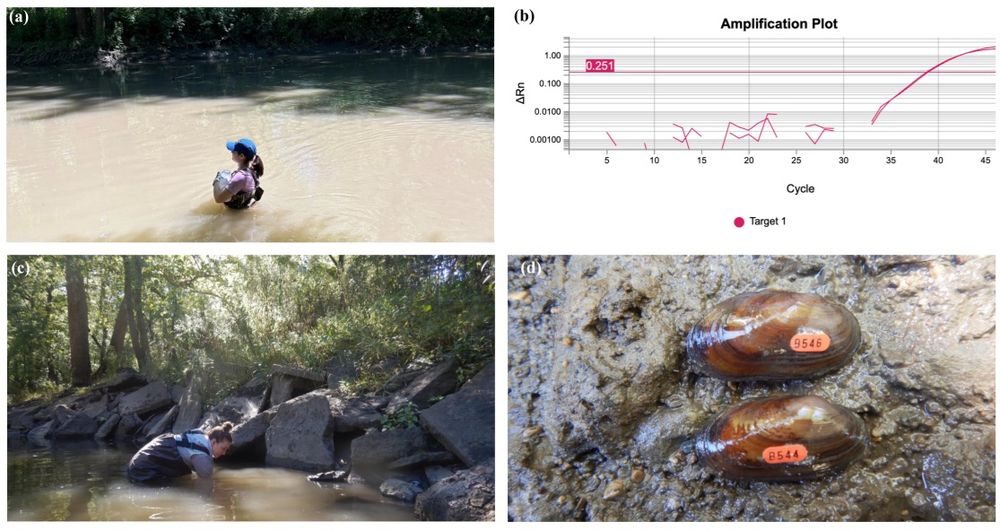
Eric R. Larson
@ericrlarson.bsky.social
Associate professor in freshwater ecology, University of Illinois at Urbana-Champaign. Crayfish, invasive species, environmental DNA, and more. https://publish.illinois.edu/erlarson/
New invasion note from southern Idaho, where we've rediscovered the non-native red swamp crayfish after a half century without detection (doi.org/10.3391/bir....). Intensive burrowing by red swamp crayfish could be a risk to canals and other irrigation infrastructure.

November 10, 2025 at 5:04 PM
New invasion note from southern Idaho, where we've rediscovered the non-native red swamp crayfish after a half century without detection (doi.org/10.3391/bir....). Intensive burrowing by red swamp crayfish could be a risk to canals and other irrigation infrastructure.
New faculty position in the University of Illinois Department of Natural Resources and Environmental Sciences for an assistant or associate professor of agroecology: illinois.csod.com/ux/ats/caree.... Position closes October 31st. Happy to answer questions about the dept / university / town.

September 24, 2025 at 9:29 PM
New faculty position in the University of Illinois Department of Natural Resources and Environmental Sciences for an assistant or associate professor of agroecology: illinois.csod.com/ux/ats/caree.... Position closes October 31st. Happy to answer questions about the dept / university / town.
Reposted by Eric R. Larson
UPDATE: The 2025-2026 list of faculty and postdoc positions in ecology and evolutionary biology is out! Be sure to check out this active and helpful community run resources! docs.google.com/spreadsheets...

ecoevojobs.net 2025-26
docs.google.com
September 19, 2025 at 9:47 PM
UPDATE: The 2025-2026 list of faculty and postdoc positions in ecology and evolutionary biology is out! Be sure to check out this active and helpful community run resources! docs.google.com/spreadsheets...
Reposted by Eric R. Larson
Completed my annual trip to northern Wisconsin, continuing population monitoring of invasive rusty crayfish (Faxonius rusticus) that extends back to the 1970s. Populations remain down, at only ~25% of past peak abundances, with surprising catches of large native snails in our traps.




September 6, 2025 at 3:00 PM
Completed my annual trip to northern Wisconsin, continuing population monitoring of invasive rusty crayfish (Faxonius rusticus) that extends back to the 1970s. Populations remain down, at only ~25% of past peak abundances, with surprising catches of large native snails in our traps.
Reposted by Eric R. Larson
It was a real pleasure to participate in the Mazama Newt Workshop at Crater Lake hosted by the @oregonzoo.bsky.social and the National Park Service. Discussions focused on a recovery plan for the Mazama newt in light of an exploding invasive signal crayfish. Great to see @ericrlarson.bsky.social!



August 26, 2025 at 11:39 PM
It was a real pleasure to participate in the Mazama Newt Workshop at Crater Lake hosted by the @oregonzoo.bsky.social and the National Park Service. Discussions focused on a recovery plan for the Mazama newt in light of an exploding invasive signal crayfish. Great to see @ericrlarson.bsky.social!
Reposted by Eric R. Larson
The RELIX catalogues every plant species in 353 prairie remnants — parts of the native grasslands of the Midwest that were not converted to farmland during colonization.

New database catalogs plant species in latest effort to restore prairies
The RELIX catalogues every plant species in 353 prairie remnants — parts of the native grasslands of the midwest that were not converted to farmland during colonization.
www.chicagotribune.com
August 23, 2025 at 9:00 PM
The RELIX catalogues every plant species in 353 prairie remnants — parts of the native grasslands of the Midwest that were not converted to farmland during colonization.
Our search for invasive crayfish barriers includes more than just dams or irrigation diversions. Because the virile crayfish is intolerant of stream drying (doi.org/10.1086/725318), intermittent reaches could present barriers to upstream spread to permanent streams in the mountains.

August 19, 2025 at 3:46 PM
Our search for invasive crayfish barriers includes more than just dams or irrigation diversions. Because the virile crayfish is intolerant of stream drying (doi.org/10.1086/725318), intermittent reaches could present barriers to upstream spread to permanent streams in the mountains.
The manager at this property noted they have problems with the invasive crayfish clogging irrigation infrastructure downstream of the diversion. Economic damages to agriculture from invasive crayfish are well-known on other continents, but I wonder if we've missed an impact in the arid western US.
This was another barrier where non-native crayfish passage was obvious before we started sampling. Here a small gate in one of the water control structures was clogged with carcasses from the upstream pool. I think this barrier is open to flow at times of the year when crayfish are moving around.


August 8, 2025 at 5:11 PM
The manager at this property noted they have problems with the invasive crayfish clogging irrigation infrastructure downstream of the diversion. Economic damages to agriculture from invasive crayfish are well-known on other continents, but I wonder if we've missed an impact in the arid western US.
This irrigation diversion looked promising as an invasive crayfish barrier. The diversion gates didn't appear to be climbable. Water is diverted into a buried pipe with screens to prevent fish entrainment. Concrete retaining walls extend into the riparian zone. Can crayfish get over or around this?

August 6, 2025 at 2:08 PM
This irrigation diversion looked promising as an invasive crayfish barrier. The diversion gates didn't appear to be climbable. Water is diverted into a buried pipe with screens to prevent fish entrainment. Concrete retaining walls extend into the riparian zone. Can crayfish get over or around this?
A relief to add a new pilose crayfish site this week. This native species disappeared from the mainstem, low elevation Bear River in Wyoming between 1987 & 2007, replaced by the non-native virile crayfish (peerj.com/articles/5668/). Remnant populations are confined to higher elevation tributaries.

August 1, 2025 at 8:55 PM
A relief to add a new pilose crayfish site this week. This native species disappeared from the mainstem, low elevation Bear River in Wyoming between 1987 & 2007, replaced by the non-native virile crayfish (peerj.com/articles/5668/). Remnant populations are confined to higher elevation tributaries.
Freshwater invaders pose unique challenges to species distribution (or ecological niche) models used in risk analysis. New in Freshwater Science (doi.org/10.1086/737200), I identify strategies to improve predictions of suitable habitat for emerging, data-poor freshwater invaders using these tools.

July 31, 2025 at 7:44 PM
Freshwater invaders pose unique challenges to species distribution (or ecological niche) models used in risk analysis. New in Freshwater Science (doi.org/10.1086/737200), I identify strategies to improve predictions of suitable habitat for emerging, data-poor freshwater invaders using these tools.
Reposted by Eric R. Larson
The publications collected in this month's LTER Network News really demonstrated the wide range of impactful research the LTER does. Here's the list:
mailchi.mp/lternet/lter...
mailchi.mp/lternet/lter...
LTER Network News | July 2025
mailchi.mp
July 31, 2025 at 6:32 PM
The publications collected in this month's LTER Network News really demonstrated the wide range of impactful research the LTER does. Here's the list:
mailchi.mp/lternet/lter...
mailchi.mp/lternet/lter...
Here's another potential invasive crayfish barrier: a concrete structure extending across a river channel associated with a municipal water supply diversion. Can crayfish get over/around this, or not?

July 30, 2025 at 3:00 PM
Here's another potential invasive crayfish barrier: a concrete structure extending across a river channel associated with a municipal water supply diversion. Can crayfish get over/around this, or not?
More hints that one of our study sites is a good place to catch crayfish

July 29, 2025 at 7:33 PM
More hints that one of our study sites is a good place to catch crayfish
Here's another potential invasive crayfish barrier: a road crossing above a concrete slab with a drop to a downstream pool. In this case we couldn't assess if the barrier was passable because we found no crayfish up or downstream of the road, likely because the stream is intermittent.

July 24, 2025 at 3:33 PM
Here's another potential invasive crayfish barrier: a road crossing above a concrete slab with a drop to a downstream pool. In this case we couldn't assess if the barrier was passable because we found no crayfish up or downstream of the road, likely because the stream is intermittent.
Sometimes we know a crayfish is at a site before we even begin sampling. In this case, the hairy claws of the pilose crayfish had washed up on the shore of a reservoir from molts or mortalities.

July 23, 2025 at 1:23 PM
Sometimes we know a crayfish is at a site before we even begin sampling. In this case, the hairy claws of the pilose crayfish had washed up on the shore of a reservoir from molts or mortalities.
This summer, my lab is working to determine whether we can protect the rare, native pilose crayfish in Wyoming from the widely invasive virile crayfish. For example, do irrigation diversions work as barriers excluding virile from pilose habitat? So: what do we think of this prospective barrier?




July 22, 2025 at 10:15 PM
This summer, my lab is working to determine whether we can protect the rare, native pilose crayfish in Wyoming from the widely invasive virile crayfish. For example, do irrigation diversions work as barriers excluding virile from pilose habitat? So: what do we think of this prospective barrier?
Reposted by Eric R. Larson
If I'm proposing to sequence a reference genome assembly and like 250 whole genomes to 10x coverage representative of the geographic scope planned, is that reasonable enough to build a reference panel for imputation? Also how do you do that?
July 17, 2025 at 9:34 PM
If I'm proposing to sequence a reference genome assembly and like 250 whole genomes to 10x coverage representative of the geographic scope planned, is that reasonable enough to build a reference panel for imputation? Also how do you do that?
New from my colleagues at the University of Illinois: a dataset of vascular plant species presence for 353 prairie remnants across the Midwestern United States (doi.org/10.3375/2162...)

July 8, 2025 at 3:57 PM
New from my colleagues at the University of Illinois: a dataset of vascular plant species presence for 353 prairie remnants across the Midwestern United States (doi.org/10.3375/2162...)
Reposted by Eric R. Larson
Map of Ecosystems of North America Completed!
@natureserve.bsky.social has released a first-of-its-kind map of ecosystems across the conterminous U.S. & nearby regions w/ a level of detail & consistency not previously available.
🧪 🌎 #GISchat
geohub-natureserve.opendata.arcgis.com/maps/Natures...
@natureserve.bsky.social has released a first-of-its-kind map of ecosystems across the conterminous U.S. & nearby regions w/ a level of detail & consistency not previously available.
🧪 🌎 #GISchat
geohub-natureserve.opendata.arcgis.com/maps/Natures...

International Vegetation Classification Groups v1.0
This layer presents information on the distribution of International Vegetation Classification (IVC) Groups for North America.
geohub-natureserve.opendata.arcgis.com
June 30, 2025 at 7:43 PM
Map of Ecosystems of North America Completed!
@natureserve.bsky.social has released a first-of-its-kind map of ecosystems across the conterminous U.S. & nearby regions w/ a level of detail & consistency not previously available.
🧪 🌎 #GISchat
geohub-natureserve.opendata.arcgis.com/maps/Natures...
@natureserve.bsky.social has released a first-of-its-kind map of ecosystems across the conterminous U.S. & nearby regions w/ a level of detail & consistency not previously available.
🧪 🌎 #GISchat
geohub-natureserve.opendata.arcgis.com/maps/Natures...
Another example of the power of environmental DNA (eDNA): a positive eDNA detection led to the rediscovery of a freshwater mussel not found live in Illinois for over a century. New student-led, open access paper in Ecology with @markdavis79.bsky.social at doi.org/10.1002/ecy....

July 3, 2025 at 1:39 PM
Another example of the power of environmental DNA (eDNA): a positive eDNA detection led to the rediscovery of a freshwater mussel not found live in Illinois for over a century. New student-led, open access paper in Ecology with @markdavis79.bsky.social at doi.org/10.1002/ecy....
Reposted by Eric R. Larson
Foundations: please step up and take over the Biodiversity Heritage Library (BHL). This is an absolutely essential scanned archive of all of the old journals and books from the 1500s to about 1920. Has been indispensable for my research.
about.biodiversitylibrary.org/call-for-sup...
about.biodiversitylibrary.org/call-for-sup...
Call for Support: – About BHL
about.biodiversitylibrary.org
July 2, 2025 at 3:55 PM
Foundations: please step up and take over the Biodiversity Heritage Library (BHL). This is an absolutely essential scanned archive of all of the old journals and books from the 1500s to about 1920. Has been indispensable for my research.
about.biodiversitylibrary.org/call-for-sup...
about.biodiversitylibrary.org/call-for-sup...
Reposted by Eric R. Larson
NOAA proposed budgets would eliminate science and management of marine mammals and sea turtles, firing 311 scientists and cutting the budget by more than $100m. Also a long list of program terminations...
See pages 16-20
www.commerce.gov/sites/defaul...
See pages 16-20
www.commerce.gov/sites/defaul...


July 1, 2025 at 7:05 PM
NOAA proposed budgets would eliminate science and management of marine mammals and sea turtles, firing 311 scientists and cutting the budget by more than $100m. Also a long list of program terminations...
See pages 16-20
www.commerce.gov/sites/defaul...
See pages 16-20
www.commerce.gov/sites/defaul...





